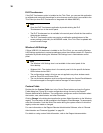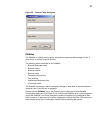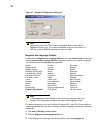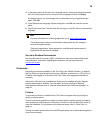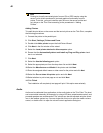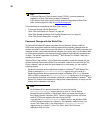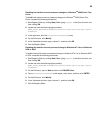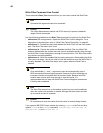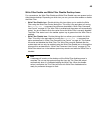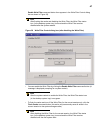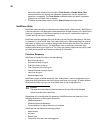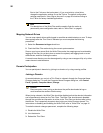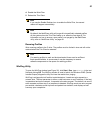
44
Write Filter Command Line Control
There are several Start | Run command lines you can use to control the Write Filter.
Note
Command line arguments cannot be combined.
Caution
Thin Client Administrators should use NT file security to prevent undesired
usage of these commands.
Use the following guidelines for the Start | Run command line option for the Write Filter:
• wtflush.exe with no arguments - Opens the Write Filter Control dialog box. For a
description of the dialog box, refer to “Write Filter Control Dialog Box” on page 46.
• wtflush.exe \f - Flushes the cache and disables the Write Filter until the next system
start. The Write Filter status icon is red.
• wtflush.exe \d - Flushes the cache and disables the Write Filter; the Write Filter
remains disabled after the system start and must be enabled manually either through
the Write Filter Control dialog box or through the command line. The Write Filter status
icon remains red while disabled.
• wtflush.exe \e - Write filter enabled after the next system start. After enabling the Write
Filter you must restart. You do not need to flush the cache first since the Write Filter is
currently disabled. The Write Filter status icon is green when the Write Filter is
enabled.
Note
Flush and disable (\f and \d arguments) open and automatically close a
DOS command window during the process. However, the flush could take up
to several minutes to complete after the window closes. Because the DOS
window does not stay open long enough to view the results, it is
recommended that you open the Write Filter Control dialog box to determine
if flushing has completed.
Note
The Write Filter status icon on the taskbar system tray turns red immediately
when the cache flush operation is started, although the flush action can take
up to several minutes to complete.
Caution
Do not attempt to flush the cache while the cache is currently being flushed.
If you open an MS-DOS Prompt window (by entering command in the Run text box),
append “.exe” to the wtflush command: wtflush.exe, wtflush.exe \f,
wtflush.exe \d, and wtflush.exe \e.



